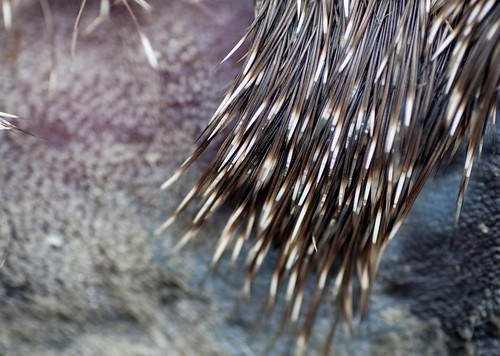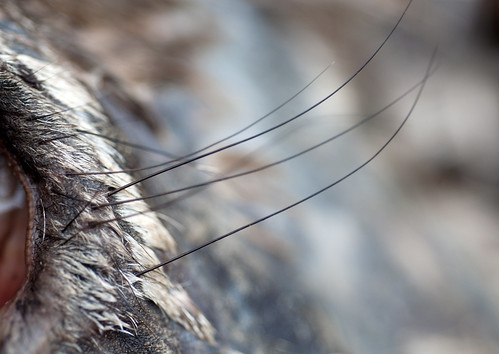My most recent visit to the remainder of March Buck, which was a week or so ago, revealed an articulated skeleton with a covering of skin. There really was no more meat left to speak of, and the only untouched parts of the body were the lower legs and feet.
The head of March Buck is, of course, undergoing a completely different process of decay. Though they have been observed in the area, coyotes can't get into my parents' backyard -- and something tells me they wouldn't be too interested, anyway. Crows have eyed the head, as has a turkey vulture; meanwhile, temperatures have been a little too chilly for the insects to really start picking away at the flesh. It has been rainy, though, and bacteria have been at work. Hair is falling from the skin, and the flesh, exposed, has transitioned through several colors: blood-red, purple, blue, gray.
At first glance, with its missing hair and blotchy, discolored flesh, the head is an ugly, putrid sight, but through a macro lens, beautiful details are revealed.








No comments:
Post a Comment